Myron Ray Lovell
1928-2002
Myron Ray Lovell was born April 24, 1927 at Hackett, Sebastian Co., Ar. to
Earl Johnny & Pearl Ardonea Martin Lovell. He spent his childhood in So.,
Sebastian Co., Ar. Myron was a twin to sister Marion Dae Lovell.
March 17, 1950 he married Willadean Oxford, both residents of Fort Smith, Sebastian Co.,
married in Crawford Co., Ar. They divorced January 26, 1955. His second wife was
Catherine E. Kathy Hester. No date for that marriage has been found.
From his draft card for the 2nd draft it shows his 1st enlistment and Navy service were
September 7, 1945 - June 30, 1949. He registhered for the 2nd draft July 5, 1949.
Another date stamped on that card says "Feb 26, 1951 Court House, Fort Smith, Ar." He
does have a listing as a resident of Fort Smith in 1951 in the Fort Smith City Directory.
Most of his service time he spent on the USS Jicarilla and the USS Burton Island.
Their storys are found below.
Myron Ray Lovell passed away 21 Apr 2002 at McAlester, Pittsburg, Oklahoma with
burial being in Memory Gardens Cemetery there.
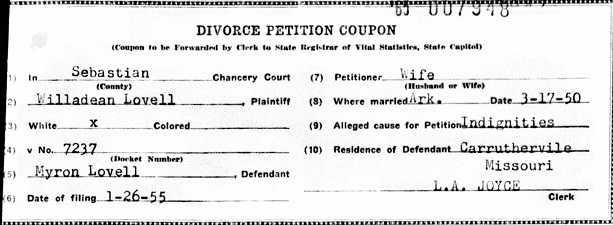
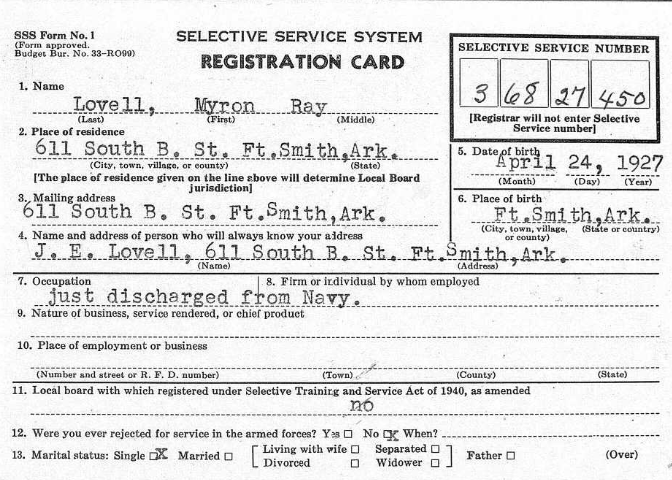
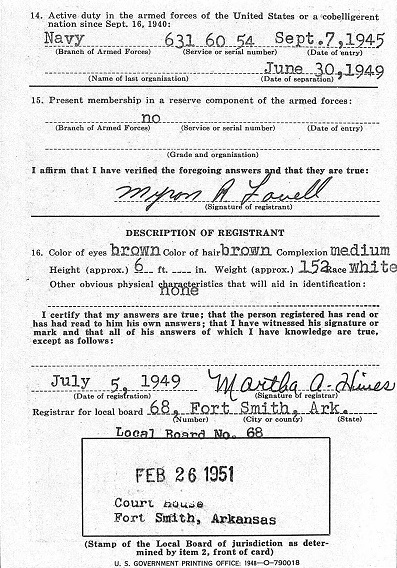
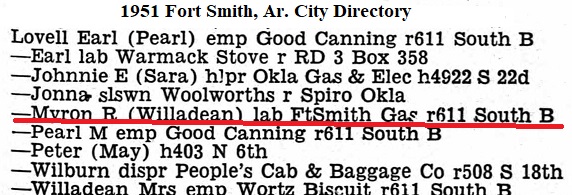
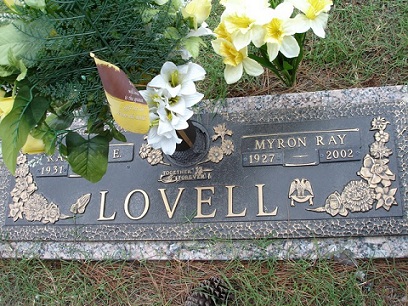
US Navy Musters and Ships
USS Repose Hospital Ship
Sept 10, 1947
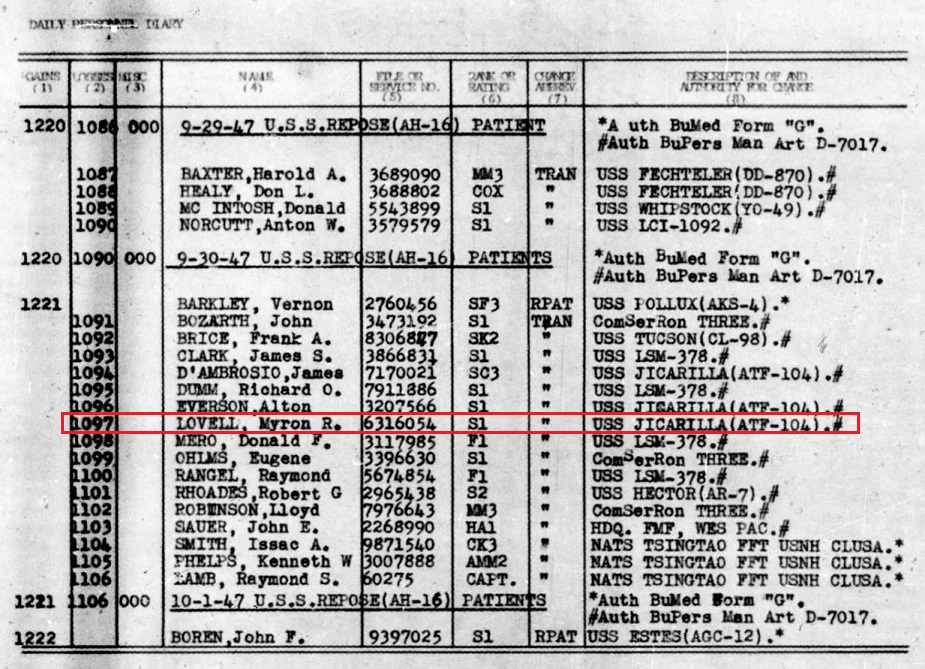
(From the 1st muster from the Jicarilla below it appears he served on the USS Mitchell before Jicarilla.)
USS Jicarilla
1947
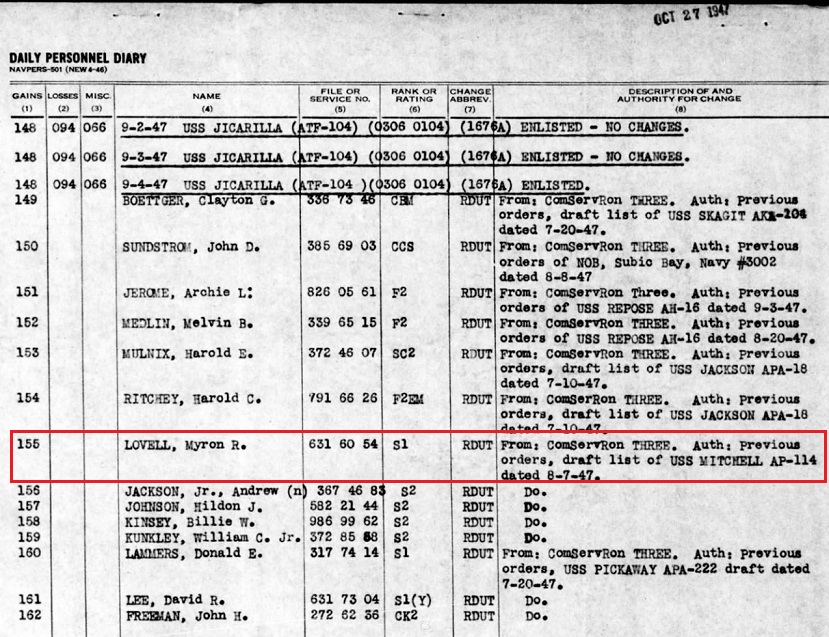
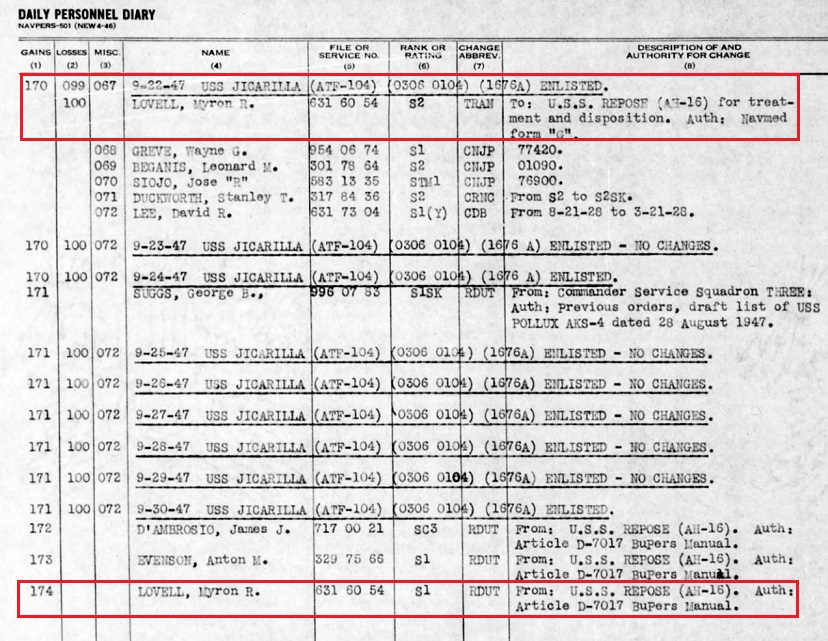
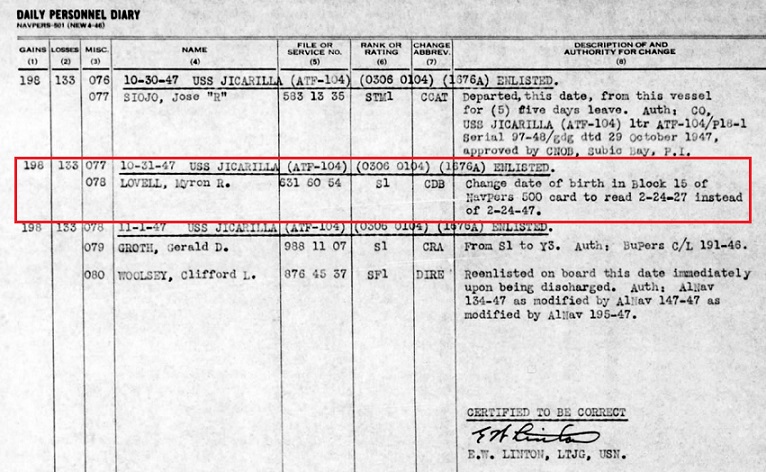
1948
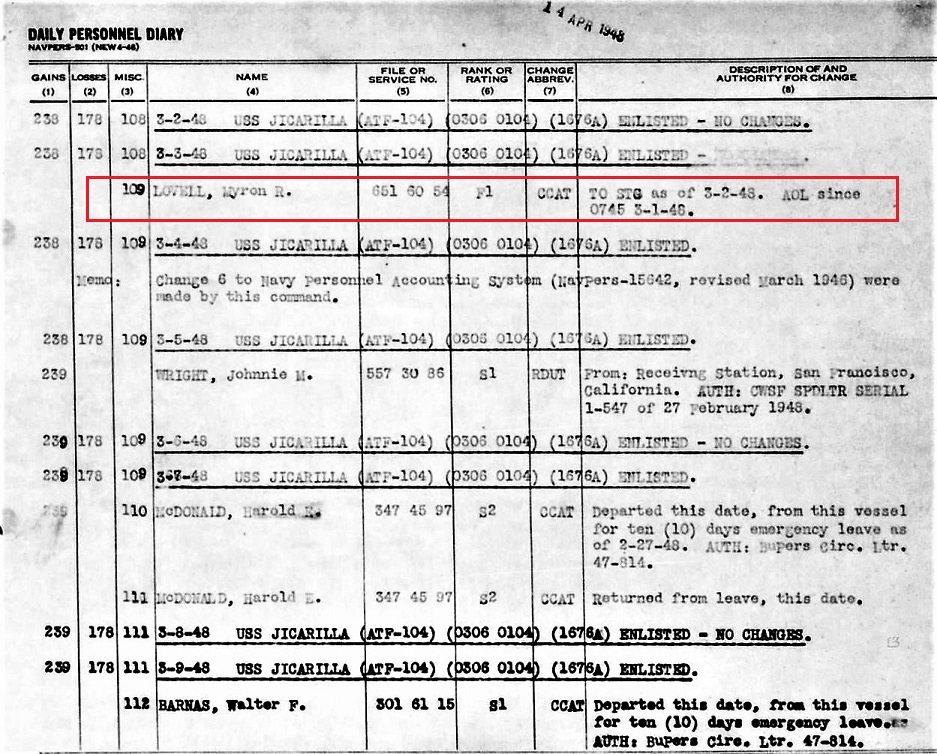
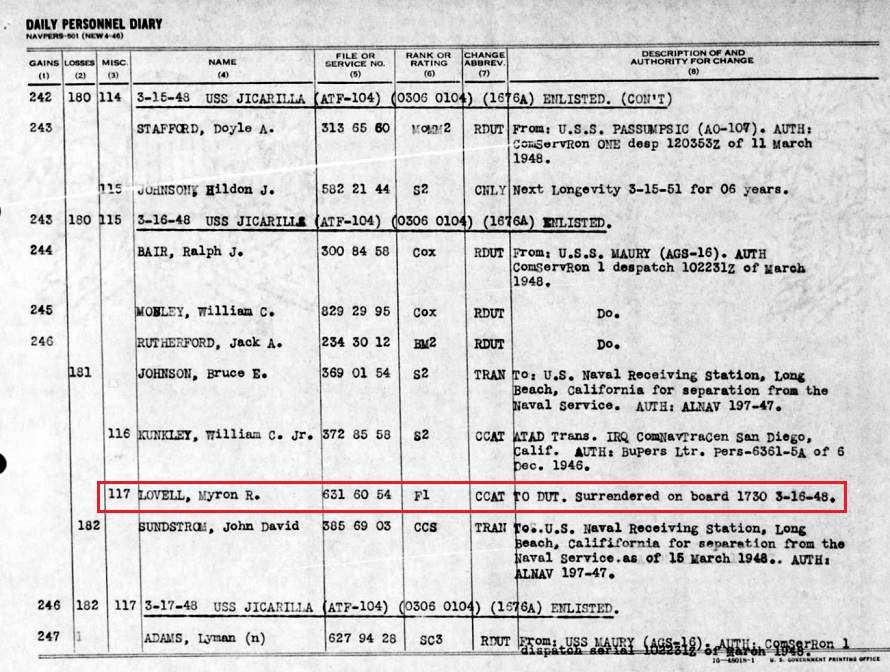
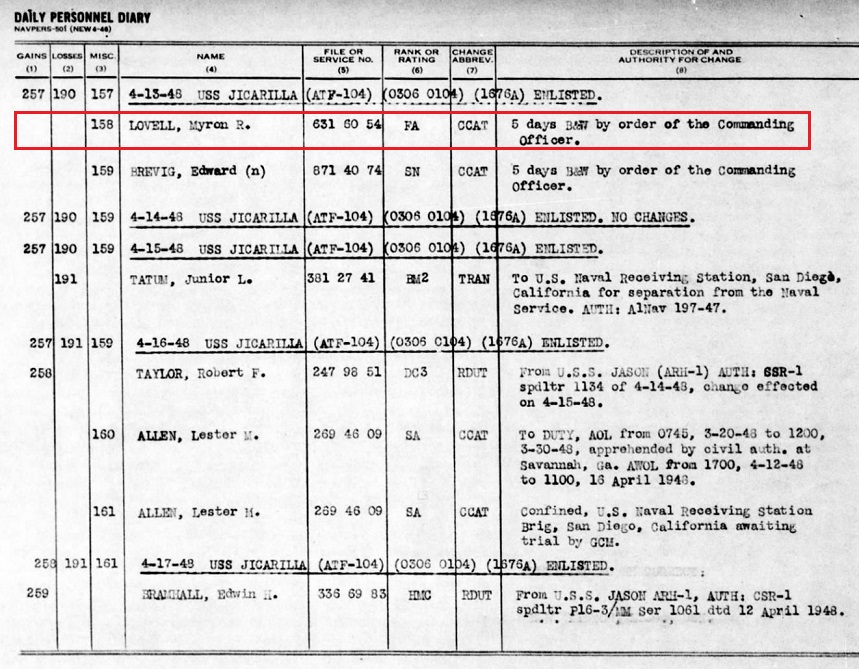
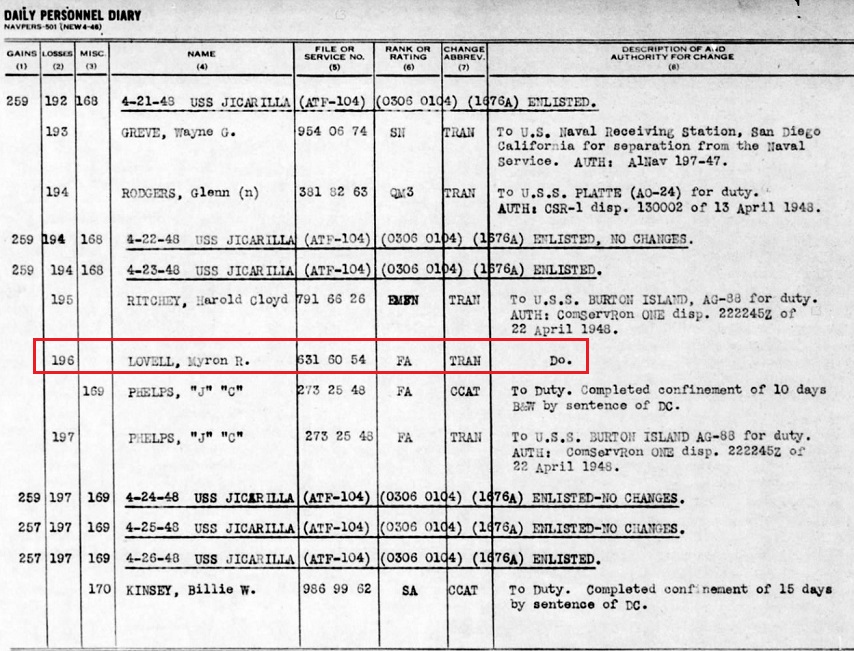
USS Burton Island
1948
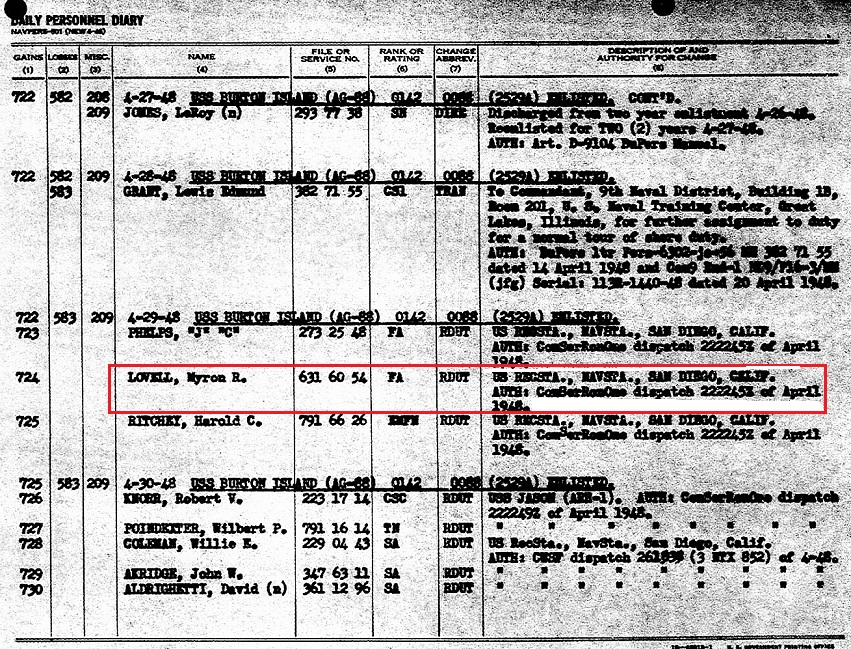
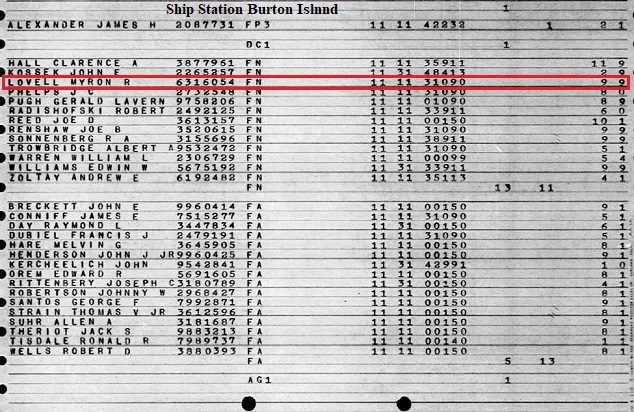
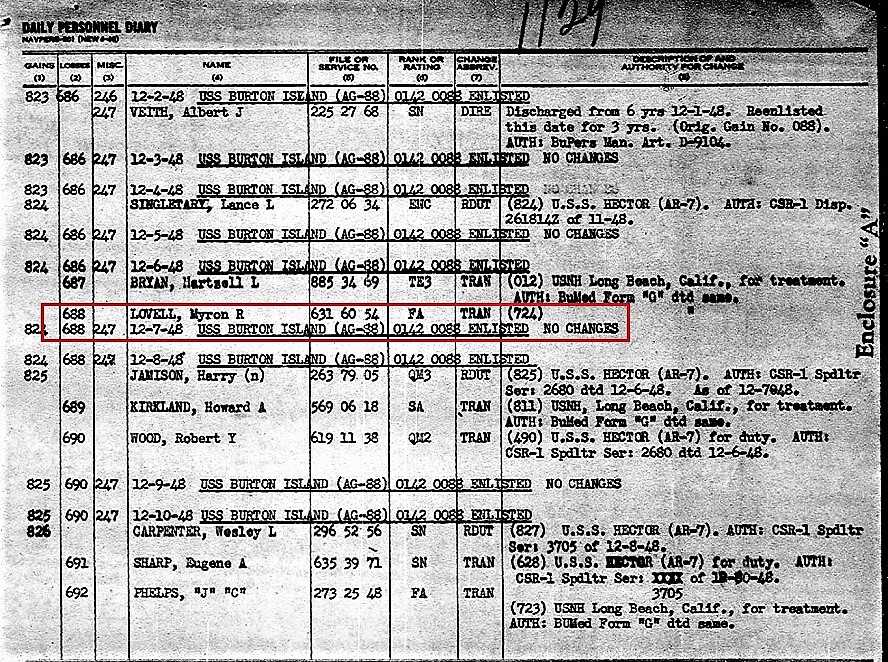
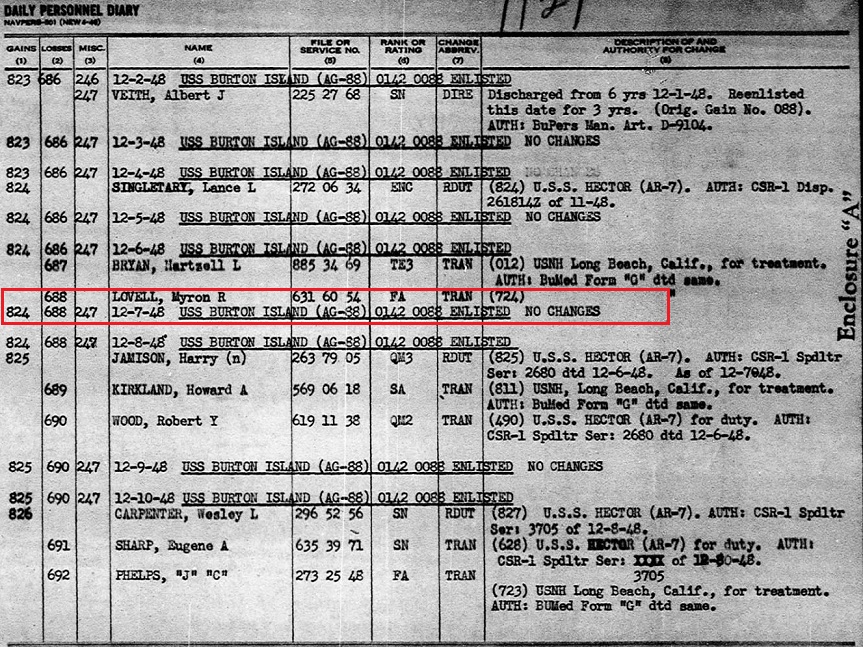
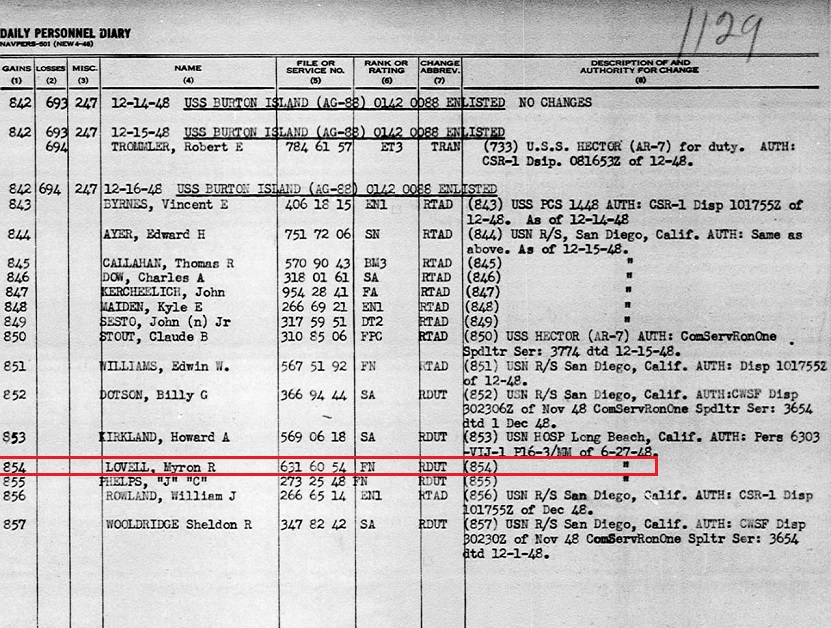

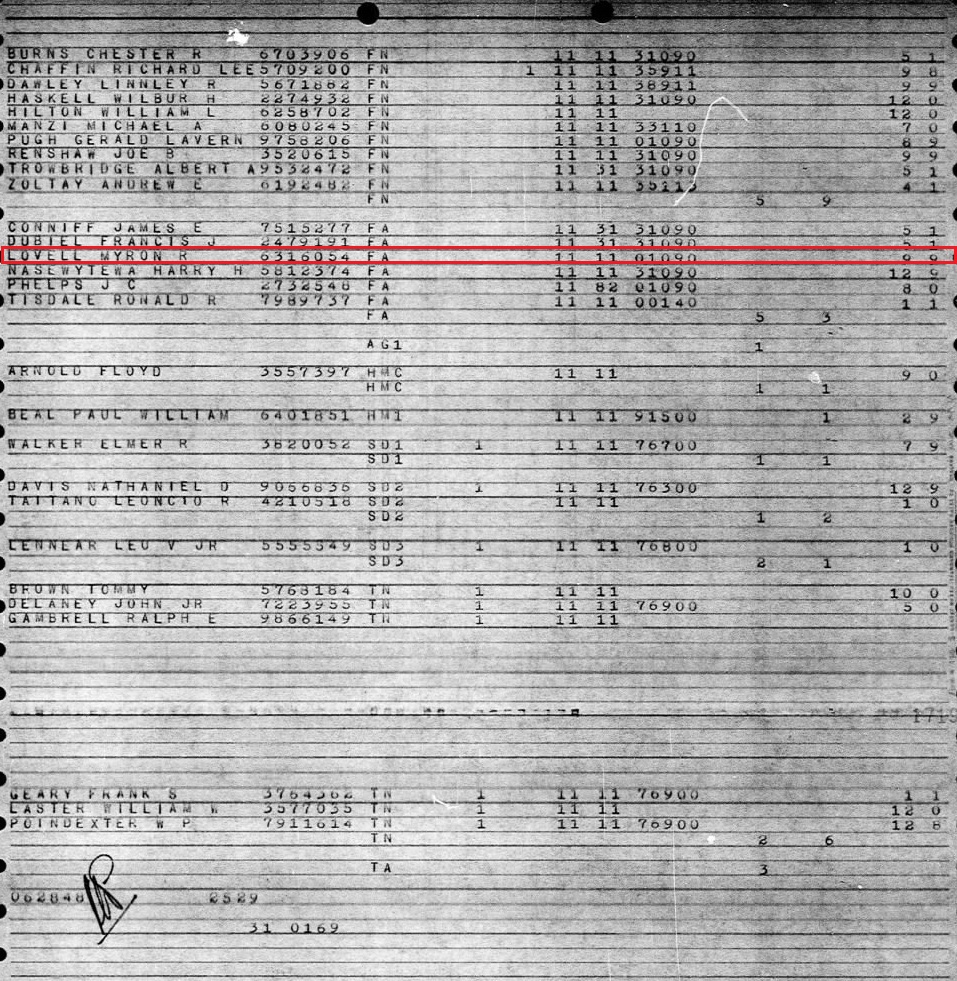
Ships Stories
His service was from 1945-1951 but his muster records do not cover all that time.
USS Mitchell (DE-43)
An Evarts-class destroyer escort constructed for the United States Navy during World War II.
She was sent off into the Pacific Ocean to protect convoys and other ships from Japanese submarines and fighter aircraft.
She performed escort and anti-submarine operations in dangerous battle areas and was awarded nine battle stars, a very high
number for a ship of her type. More on her service can be found at HERE
USS Repose
USS Repose (AH-16) was a Haven-class hospital ship in service with the United States Navy,
active
from May 1945 to January 1950, from October 1950 to December 1954, and from October 1965 to May 1970.
USS Jicarilla
USS Jicarilla (ATF-104) was Abnaki-class tugboat during the World War II.
USS Jicarilla towing USS Nevada with a big torpeda hole in her side in 1948
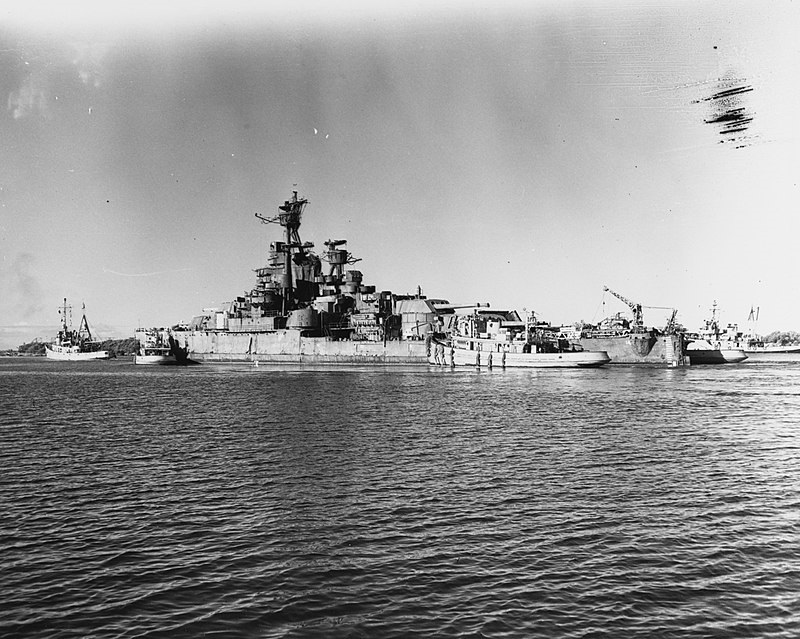
Following shakedown in Chesapeake Bay, Jicarilla departed New York towing barges 9 August 1944,
bound fox San Francisco via the Panama Canal. She arrived 22 September, but sailed again seven
days later towing ARD-21 to Pearl Harbor. The tug remained in Hawaiian waters until November
doing salvage and towing work, including the difficult task of pulling SS Antigua off a reef
from 14 to 21 October. Departing Pearl Harbor on 7 November, she towed barges of supplies to
advance bases at Eniwetok and Ulithi, arriving the latter island on 3 December.
With the campaign to recapture the Philippines well underway, Jicarilla sailed on 10 December
as part of the refueling group for Task Force 38, the fast carrier group then supporting the
Philippines operation. Refueling began early on 17 December but had to be broken off as weather
worsened. Anxious to top off his destroyers and support the Mindoro operation. Admiral Halsey
continued attempts to refuel until the next morning, when Jicarilla and the rest of the
fueling group turned south. The fleet tug rode out the typhoon and returned to Ulithi on
22 December, but the great storm sank three gallant destroyers, two of them from Jicarilla's
group. Undaunted, the fast carrier force resumed its punishing attacks on the Philippines.
Jicarilla arrived at Leyte on 7 January to support the next amphibious operation at Lingayen
Gulf. She sailed on 9 January with a convoy of LCI's and LST's; despite numerous air attacks
by the Japanese, she arrived at Mangarin Bay 2 days later. The tug remained there until 22
January performing salvage and firefighting duties on the many damaged and beached landing
craft. She arrived Ulithi on 27 January. After towing voyages between Ulithi and the Marianas,
Jicarilla sailed from Ulithi on 9 April pulling a much-needed floating drydock to Okinawa.
The veteran tug arrived at Kerama Retto, repair base for the Okinawa operation, 16 April,
and remained there to perform salvage work on ships damaged in the desperate kamikaze attacks.
She sailed on 20 April with Idaho, arrived at Guam on 25 April, and from there returned to
Ulithi on 30 April. After towing work at the advance base, she sailed for Leyte on 19 May
and arrived Okinawa again on 13 June. As the struggle for the island continued, she worked
directly off the Hagushi beaches, towing landing craft and performing salvage work. Thus,
she contributed importantly to the eventual victory by helping to keep the massive fleet
afloat and operating.
Jicarilla remained at Okinawa until departing for Wakayama, Japan, 21 September. Four days
later she arrived, and performed towing duties in connection with the occupation operations
until returning to Okinawa on 14 October. After a voyage to Guam, the ship steamed to Iwo
Jima on 4 December to salvage the ARL-32. In the months that followed, she was engaged in
towing and salvage in the Marshalls and Carolines, arriving Pearl Harbor on 24 April 1946.
Jicarilla spent the summer of 1946 in the Marshall Islands in support of Operation Crossroads,
the history-making atomic test series in the Pacific. Returning to the United States on 14
September, she performed towing duties on the West Coast and at the Canal Zone until 23
January, when she sailed again for the Far East from Bremerton, Washington. The ship operated
out of Pearl Harbor until May, sailing on the 14th to Guam. Jicarilla arrived Tsingtao,
China, 17 June for towing and salvage work in connection with the American Marines ashore.
In the months that followed, she continued to steam between American Pacific bases and China.
After a month at Pearl Harbor, she returned to Long Beach on 18 February 1948. On 26 July,
Jicarilla towed the former battleship Nevada out to sea to be sunk as a target.
The ocean tug conducted operations on the Pacific coast and out of Pearl Harbor until arriving
Yokosuka on 25 January 1949. She again supported the American effort to bring peace and
security to China and the Far East, before returning to Long Beach on 19 August 1949. After
additional towing on the West Coast, she decommissioned at San Diego on 14 June 1950 and
entered the Pacific Reserve Fleet.
USS Burton Island (AG-88)
A United States Navy Wind-class icebreaker.
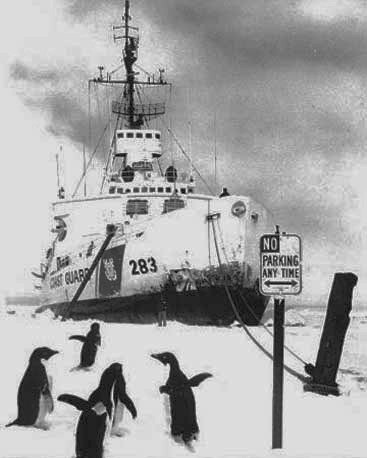 USS Burton Island USS Burton Island
On 17 January 1947, Burton Island, loaded with supplies, steamed from San Diego to the Ross
Sea, Antarctica where she met with units of TF 68 on the first Antarctica Development project,
Operation Highjump. After returning from Antarctica, Burton Island departed 25 July 1947 for
the Point Barrow expedition to Alaska.
From April 1948 to December 1956, Burton Island participated in 19 Arctic and Alaskan cruises,
including Operation Windmill. During Operation Windmill in the Antarctic Burton Island was the
flagship of CDR Gerald L. Ketchum, USN commander of Task Force 39. Duties on the cruises
varied including, supply activities, helicopter reconnaissance of ice flows, scientific
surveys, underwater demolition surveys, and convoy exercises.
In March 1949, Burton Island was redesignated AGB-1.
In February 1958, Burton Island assisted Soya, which had become iced in near Antarctica
carrying a replacement crew of Japanese geophysical researchers. A helicopter carried out
the original crew, stranded at the Japanese base at Showa Station, but was forced to leave
15 dogs behind, including Taro and Jiro, who survived an Antarctic winter without human
accompaniment.
One prominent excursion was with the submarines USS Seadragon (SSN-584) and USS Skate (SSN-578)
in 1962, in which torpedoes were tested underneath the polar ice pack after the two submarines
had rendezvoused at the North Pole
|
|
|
|